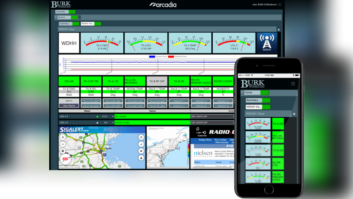
SANTA CLARA, Calif. Four months after a former employee shot and killed three SiPort executives, this Silicon Valley chip designer is working to move forward and beyond the tragedy, at least in its business operations.
Its new HD Radio chip is in mass production at Taiwan Semiconductor Manufacturing Company and shipping to receiver manufacturers and module-makers.
The Silicon Valley company says its SP1010 single-chip solution for HD Radio draws the lowest power of all IBOC chips — 110 milliwatts, roughly equivalent to 15 to 20 hours of battery life on a portable device, spokesman Sunder Velamuri told Radio World.
That compares to a prototype KRI armband MP3 player/HD Radio receiver that iBiquity displayed in its booth at CES, the smallest device that an IBOC chip has been integrated into so far. That device uses 500 milliwatts of power and would last between six to eight hours after one charge, Velamuri estimated.
The SP1010 handles all symbol decoding, synchronization, de-interleaving, error detection and error-correction functions.
The SiPort integrated circuit will be designed into a new generation of MP3 players scheduled for launch by the fourth quarter. The company is looking for more device makers to partner with.
The company believes many consumers are not setting out to buy a radio, specifically, but that they want their audio entertainment as part of their portable, personal devices — paralleling the emphasis that industry organizations like the NAB have placed on getting radio into such consumer electronics.
That’s why SiPort is focused on designing HD Radio chips for portables, according to Velamuri, who noted that there is an established base of some 100 million iPods sold to date in the United States.
Even with the economic downturn, he noted that Apple sold about 22 million iPods in the fourth quarter of 2008. Placing HD Radio onto the cell phone platform would be “the Holy Grail,” Velamuri said; it would allow more people to sample radio and invite more teens and young adults into the radio listening demo.
The single-chip HD Radio IC is small — 9 x 9 millimeters, or about one-third of an inch square — and draws 110 milliwatts of power, several times less than competitors, SiPort says. Device makers don’t want HD Radio “to make their design fatter, bigger or have less battery life,” he said.
Samsung, NXP Semiconductor and Texas Instruments also make HD Radio chips, with the latter two focusing on the automotive market.
Moving on
Company officials had been mute publicly since Nov. 14, when a former test engineer for SiPort shot and killed three executives, including former CEO Sid Agrawal.
It has now moved to another location. All 38 of its staff stayed with SiPort. “After the tragedy the company is coming together,” Velamuri said in his first interview with radio trade press since the fall shootings.
Co-founder Aiman Kabakibo has resumed the title of CEO and remains vice president of engineering. The company is searching for a new CEO, Velamuri confirmed.
The venture-backed semiconductor company was formed in 2004. It develops mixed signal RF and digital baseband wireless receiver chips supporting multiple digital broadcast standards. Investors include Lightspeed Venture Partners, Morgenthaler, New Venture Partners and Intel Capital.
IBiquity Digital certified LG Innotek’s HD Radio modules in October 2008; those were the first certified HD Radio modules designed with SiPort’s SP1010.












